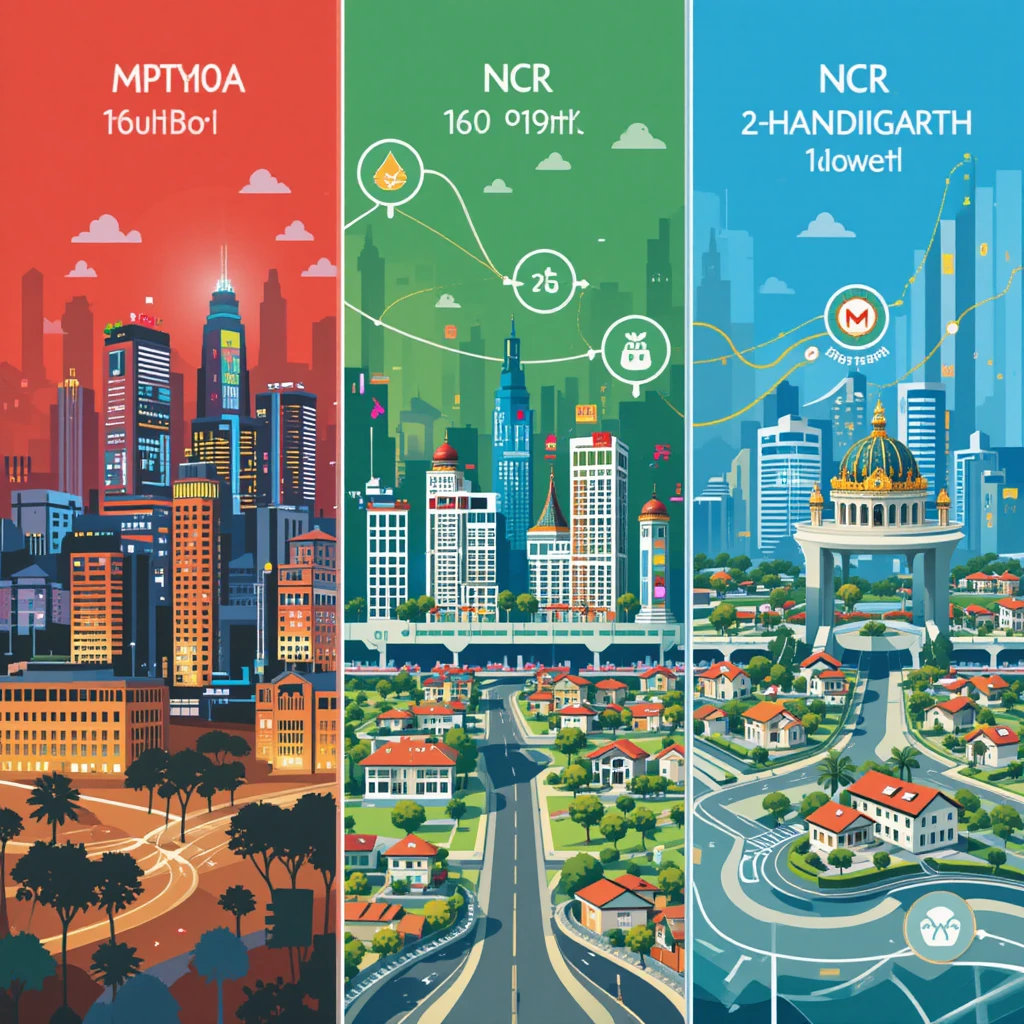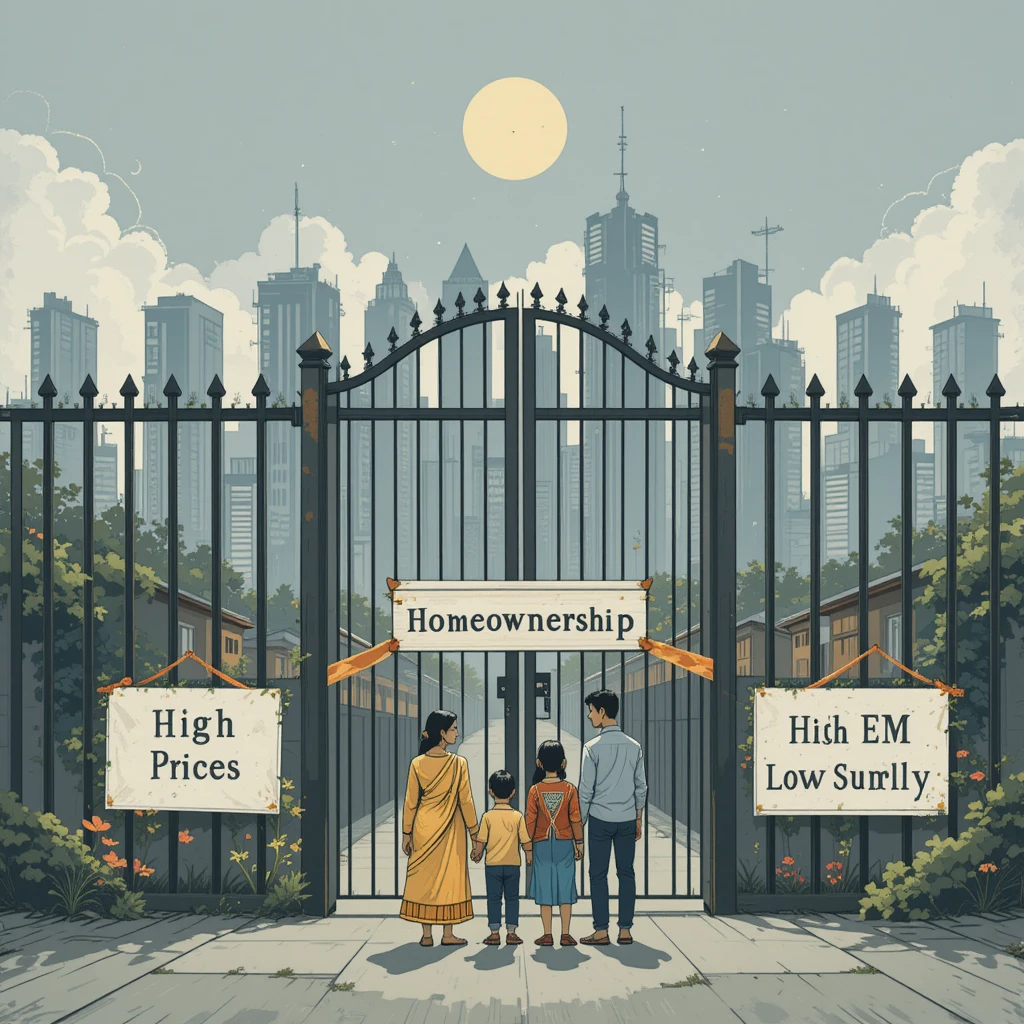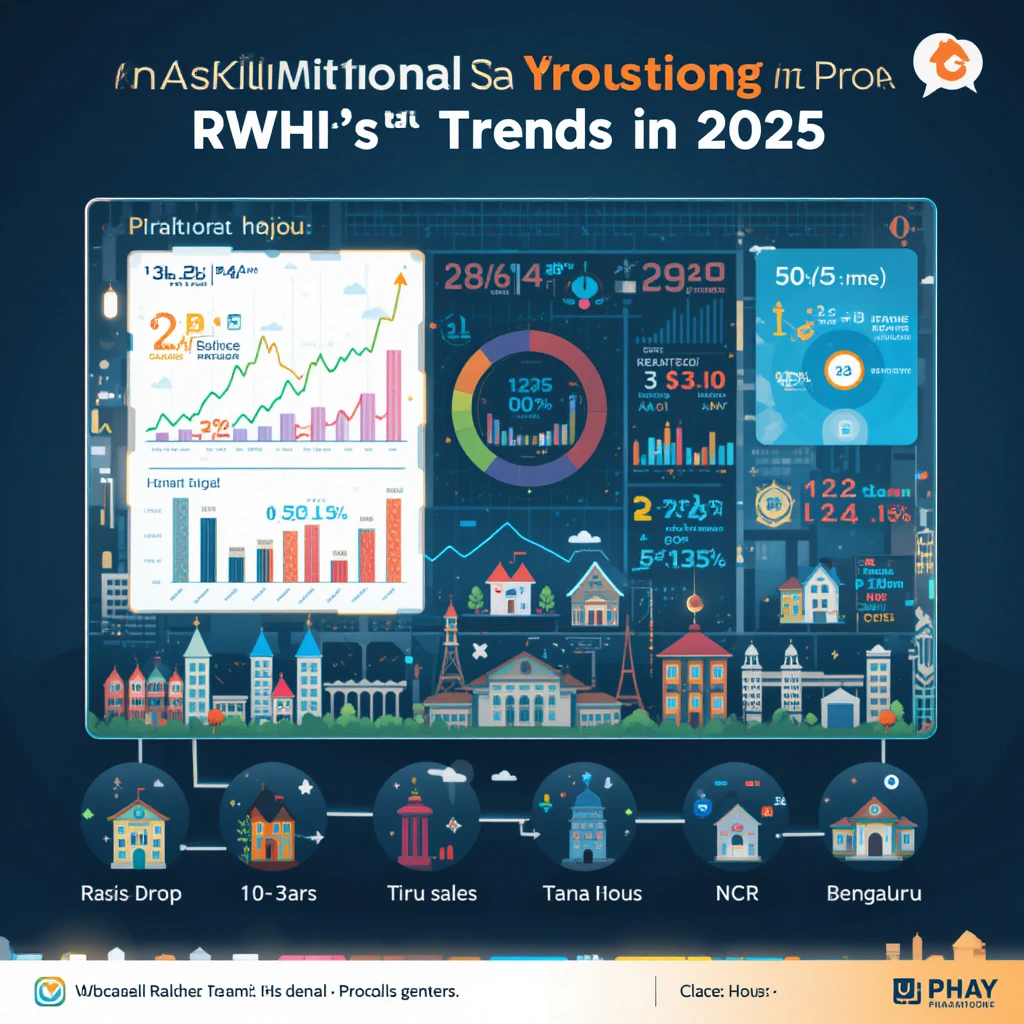India’s real estate market, a key driver of economic growth, reflects the nation’s rapid urbanization and shifting consumer preferences. The National Housing Bank (NHB), the apex institution for housing finance, provides critical insights through its NHB RESIDEX and Report on Trends and Progress of Housing in India 2024 (released March 2025). These reports, complemented by data from ANAROCK, PropEquity, and Knight Frank, highlight housing trends in the National Capital Region (NCR), Mumbai, and Chandigarh. This article analyzes house purchase patterns, with a focus on the escalating barriers faced by the middle class in achieving homeownership as of June 2025, offering a comprehensive view for policymakers, investors, and homebuyers.

Table of Contents
The National Housing Bank’s Role
Established in 1988, the NHB regulates and finances India’s housing sector, fostering a robust ecosystem for homeownership. The NHB RESIDEX, launched in 2007, tracks residential price movements across 50 cities, while the annual Trends and Progress report details sales, affordability, and financing trends. These resources, alongside real-time data from industry reports and X posts, reveal a market grappling with soaring prices, declining affordability, and a shift toward luxury housing, particularly in urban hubs like NCR, Mumbai, and Chandigarh.

House Purchase Trends in Key Cities
Mumbai: The Unaffordable Metropolis
Mumbai, India’s financial capital, remains the nation’s priciest housing market, driven by limited land, high demand, and a surge in luxury projects. NHB data from 2025 indicates that even the top 5% of earners, with a monthly household income of ₹10.7 lakh, would need 109 years to save for a 1,184 sq. ft. home costing ₹3.5 crore, assuming a 30.2% savings rate and a per-sq.-ft. rate of ₹29,911.

- Sales Slowdown: The Mumbai Metropolitan Region (MMR) saw a 26% year-on-year (YoY) sales drop in Q1 2025, with 36,200 units sold in Q3 2024 (down 6% YoY, 13% quarter-on-quarter). Rising interest rates (repo rate at 6.5%) and global economic headwinds deterred buyers.
- Price Surge: Average residential prices rose 10–34% in Q1 2025, with the average home price reaching ₹1.64 crore in 2024, fueled by premium launches.
- Delayed Projects: Over 1.28 lakh units worth ₹1.84 lakh crore remain stuck in MMR (as of May 2022), though 5,300 units were completed in early 2022.
- Consumer Sentiment: MMR accounted for 20% of India’s property searches in 2023, with 63% of luxury demand. Multi-storey 3 BHK apartments dominate preferences (80% of sales).

National Capital Region (NCR): A Resilient Powerhouse
NCR, encompassing Delhi, Gurgaon, Noida, Greater Noida, and Ghaziabad, thrives on infrastructure projects like the Dwarka Expressway and demand for premium and compact homes, making it a market leader.
- Price Surge: NCR recorded a 56% YoY price increase in 2024, with a 1,184 sq. ft. home averaging ₹1.45 crore. Noida’s per-sq.-ft. rate soared 152% from 2019–2024 (₹5,910 to ₹14,946).
- Sales Resilience: NCR posted a 16% YoY sales increase in Q2 2025, defying a national 28% drop in Q1 2025. In 2022, NCR sold 63,700 units, second only to MMR.
- Delayed Projects: NCR has 2.40 lakh stuck units worth ₹1.81 lakh crore (May 2022), but 16,750 units were completed in early 2022.
- Consumer Sentiment: NCR captured 19% of property searches in 2023, with 34% of luxury demand, driven by infrastructure and diverse housing options.

Chandigarh: The Affordable Haven
Chandigarh, the planned capital of Punjab and Haryana, stands out as India’s most affordable capital city, offering a balanced housing market for middle-income buyers.
- Affordability: The top 5% of earners can buy a 1,184 sq. ft. home with 15 years of savings, the lowest among 21 capitals, due to stable prices and reasonable incomes.
- Housing Board Initiatives: The Chandigarh Housing Board (CHB) promotes access through e-auctions, offering 24 freehold residential units in sectors like 51 and 47 in August 2024.
- Market Stability: Chandigarh’s steady demand and high quality of life attract end-users, with minimal speculative investment.

The Middle-Class Housing Crisis
The middle class, defined as households earning ₹5–20 lakh annually, faces unprecedented barriers to homeownership in urban centers like NCR and Mumbai. Chandigarh’s affordability is an exception, but its limited scale cannot address the national crisis. Below are the key challenges:
1. Skyrocketing Prices vs. Stagnant Incomes
- Mumbai: A ₹1.64 crore home is 20–30 times a middle-class household’s annual income (₹5–10 lakh). A 1 BHK in Thane (₹50–80 lakh) requires 10–15 years of savings.
- NCR: Gurgaon’s 2 BHK units (₹80 lakh–₹1.2 crore) and Noida’s shrinking affordable options (₹40–60 lakh) demand 30–50 years of savings for a ₹10 lakh household.
- Chandigarh: A 2 BHK (₹40–60 lakh) is achievable in 5–10 years for a ₹8–12 lakh household, but limited launches restrict access.

Impact: With property prices rising 10–34% in 2025 and incomes growing at 5–7%, the middle class is priced out, forced into rentals or distant suburbs.
2. High Interest Rates and Loan Barriers
- Loan Costs: At 8.5–10% interest, a ₹50 lakh loan over 20 years yields an EMI of ₹47,500, consuming 50–70% of a middle-class household’s income (₹70,000–₹1 lakh).
- Eligibility Limits: A ₹10 lakh household qualifies for a ₹50–60 lakh loan, insufficient for NCR or MMR’s prime areas. Down payments (20–30%) further strain savings.
- NHB Insights: Housing finance grew 12% in 2023–24, but middle-class borrowers face tight credit scrutiny due to high debt-to-income ratios.
Impact: High EMIs and down payments deter purchases, pushing the middle class toward smaller units or delayed plans.
3. Dwindling Affordable Housing Supply
- Luxury Shift: Affordable housing supply (below ₹50 lakh) fell 60% YoY in Q2 2025, with 70% of 2024 launches priced above ₹1 crore.
- PMAY Limitations: The Pradhan Mantri Awas Yojana (PMAY) delivered 1.2 crore homes by 2024 but excludes middle-class households earning above ₹6 lakh annually.
- Chandigarh’s Model: CHB’s affordable projects sustain supply, but scalability is limited.
Impact: The middle class faces a supply crunch, settling for peripheral locations or lower-quality homes.
4. Delayed Projects and Eroded Trust
- Stuck Units: NCR and MMR hold 77% of India’s 4.8 lakh delayed units (₹3.7 lakh crore, May 2022). Middle-class buyers risk life savings on under-construction projects.
- RERA Progress: The Real Estate (Regulation and Development) Act, 2016, improves transparency, but enforcement gaps persist.
Impact: Delays discourage investment in affordable projects, limiting options to costlier ready-to-move-in homes.
5. Socioeconomic Fallout
- Rental Burden: Middle-class families spend 30–50% of income on rent (₹20,000–₹40,000 for a 2 BHK), reducing savings.
- Suburban Shift: Buyers move to Greater Noida or Navi Mumbai (₹30–50 lakh homes), facing long commutes and limited amenities.
- Delayed Milestones: Housing costs delay marriage, child-rearing, and other goals, impacting quality of life.
- Inequality: The luxury housing boom widens the wealth gap, marginalizing the middle class.
National Housing Market Trends
- Sales Decline: Sales across seven major cities fell 28% YoY in Q1 2025 (93,280 units vs. 130,170 in Q1 2024), driven by high prices and economic uncertainty.
- Price Growth: Prices rose 10–34% in Q1 2025, with NCR (34%) and Bengaluru (20%) leading. The national average home price hit ₹1.23 crore in 2024.
- Luxury Boom: Premium homes worth ₹3.80 lakh crore sold in 2024’s first nine months, catering to high-net-worth buyers.
- Policy Support: PMAY and NHB’s ₹27,000 crore financing in 2023–24 bolster affordability, but urban land costs limit impact.

Solutions for the Middle Class
Immediate Steps:
- Boost Affordable Supply: Tax incentives for developers to launch ₹30–50 lakh projects.
- Lower Loan Rates: Subsidized rates (6–7%) or 30-year tenures for middle-income borrowers.
- Strengthen RERA: Enforce strict project timelines to rebuild trust.
- Expand CHB Model: Replicate Chandigarh’s e-auctions in NCR and MMR.

Long-Term Reforms:
- Land Reforms: Release government land and ease FSI norms to reduce costs.
- PMAY Inclusion: Extend subsidies to ₹6–12 lakh earners.
- Suburban Connectivity: Enhance infrastructure to make peripheral areas viable.
- Rental Housing: Promote regulated rentals with tax benefits.
Future Outlook
- NCR: Infrastructure and luxury demand will drive growth, but affordable projects could ease middle-class access.
- Mumbai: Festive launches and potential rate cuts in late 2025 may spur sales, though affordability challenges persist.
- Chandigarh: Stable affordability will attract middle-class buyers, serving as a model for reform.
- Policy Impact: NHB, PMAY, and RBI policies will shape recovery, with a repo rate cut to 6% potentially lowering EMIs.
Conclusion
The NHB’s 2024 report reveals a dynamic yet unequal housing market: NCR’s resilience, Mumbai’s unaffordability, and Chandigarh’s affordability highlight diverse realities. The middle class, however, faces a crisis, with soaring prices, high loan costs, and scarce affordable options making homeownership elusive. In Mumbai, a modest home requires decades of savings, while NCR’s price surges exclude middle-income buyers. Chandigarh offers hope, but broader reforms—more supply, better financing, and policy innovation—are critical to ensure equitable housing access. As India’s urban population grows, addressing the middle-class housing crisis will be essential for economic and social stability.
For NHB reports, visit www.nhb.org.in. For related services, see x.ai/grok or help.x.com.




